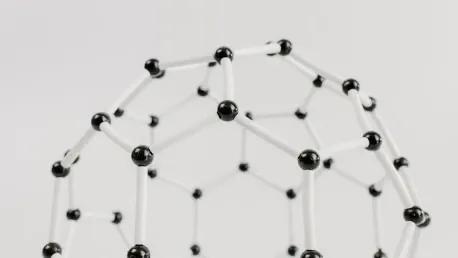Researchers have developed a groundbreaking on-chip device that can detect molecules by utilizing their infrared vibrational fingerprint, a technological advancement with vast potential applications. This innovative device converts incident infrared light into ultra-confined “nanolight” through phonon polaritons within its active area, enhancing the molecular fingerprint’s detectability. The compact design and room-temperature operation of this device suggest a promising future for ultra-compact platforms in molecular and gas sensing applications. Such innovation could be transformative, altering how we conduct molecular sensing in medical diagnostics, environmental monitoring, and even consumer electronics.
Infrared fingerprint spectroscopy takes advantage of the fact that molecules exhibit unique vibrational frequencies when illuminated with light, akin to human fingerprints that make it possible to identify and differentiate individuals. This inherent capability allows for the detection of various molecules or gases, enabling the identification of poisonous substances that could pose risks to human health and safety. Traditional methods of infrared fingerprint spectroscopy use reflection or transmission spectra to identify molecules, but they often face significant challenges due to the small size of organic molecules compared to the wavelength of infrared light. This size discrepancy results in weak scattering signals, making it difficult to detect small quantities of material accurately.
Innovations and Enhancements in Infrared Spectroscopy
In recent years, Surface-Enhanced Infrared Absorption (SEIRA) spectroscopy has helped overcome some limitations of traditional infrared fingerprint spectroscopy by leveraging the infrared near-field enhancement provided by rough metal surfaces or metallic nanostructures. This enhancement amplifies the molecular vibrational signals, making SEIRA spectroscopy highly advantageous for measuring and studying minute quantities of material. Such advancements have allowed for more precise and sensitive detection capabilities, yet challenges remain, particularly in the miniaturization and integration of such technologies into compact, on-chip platforms.
Adding to these developments, recent research into hyperbolic phonon polaritons (HPhPs) in thin layers of hexagonal boron nitride (h-BN) has shown great promise in boosting SEIRA spectroscopy sensitivity even further due to their long lifetimes and ultra-high field confinement. However, despite these benefits, SEIRA spectroscopy traditionally requires bulky and cumbersome equipment, which has limited its potential for miniaturization and on-chip applications. Concurrent advancements in graphene-based infrared detectors have offered additional promise, demonstrating that phonon polaritons can be electrically detected and significantly enhance detector sensitivity while operating at room temperature.
A revolutionary breakthrough was achieved when researchers combined the sensitivity of hyperbolic phonon polaritons with the compactness and efficiency of graphene-based infrared detectors to demonstrate the first on-chip phononic SEIRA detection of molecular vibrations. Collaboration among various research institutions, including Nanogune and ICFO, led to the successful utilization of ultra-confined HPhPs to detect molecular fingerprints in nanometer-thin molecular layers directly in the photocurrent of a graphene-based detector. This integration eliminated the need for traditional bulky IR detectors, paving the way for enhanced miniaturization and practical applications across diverse fields.
Potential for Future Applications
Researchers have developed an innovative on-chip device capable of detecting molecules through their infrared vibrational fingerprint, opening wide-ranging applications. This device transforms incoming infrared light into highly confined “nanolight” via phonon polaritons in its active area, making the molecular fingerprints more detectable. Its compact size and ability to operate at room temperature hint at a promising future for ultra-compact platforms in molecular and gas sensing applications. This advancement could revolutionize molecular sensing in fields like medical diagnostics, environmental monitoring, and consumer electronics.
Infrared fingerprint spectroscopy uses the unique vibrational frequencies of molecules when exposed to light, similar to how human fingerprints can identify individuals. This enables the detection of various molecules or gases, including hazardous substances that might threaten human health and safety. Traditional infrared fingerprint spectroscopy methods rely on reflection or transmission spectra to identify molecules. However, they struggle with the small size of organic molecules compared to the wavelength of infrared light, resulting in weak scattering signals and making it challenging to detect small quantities accurately.









